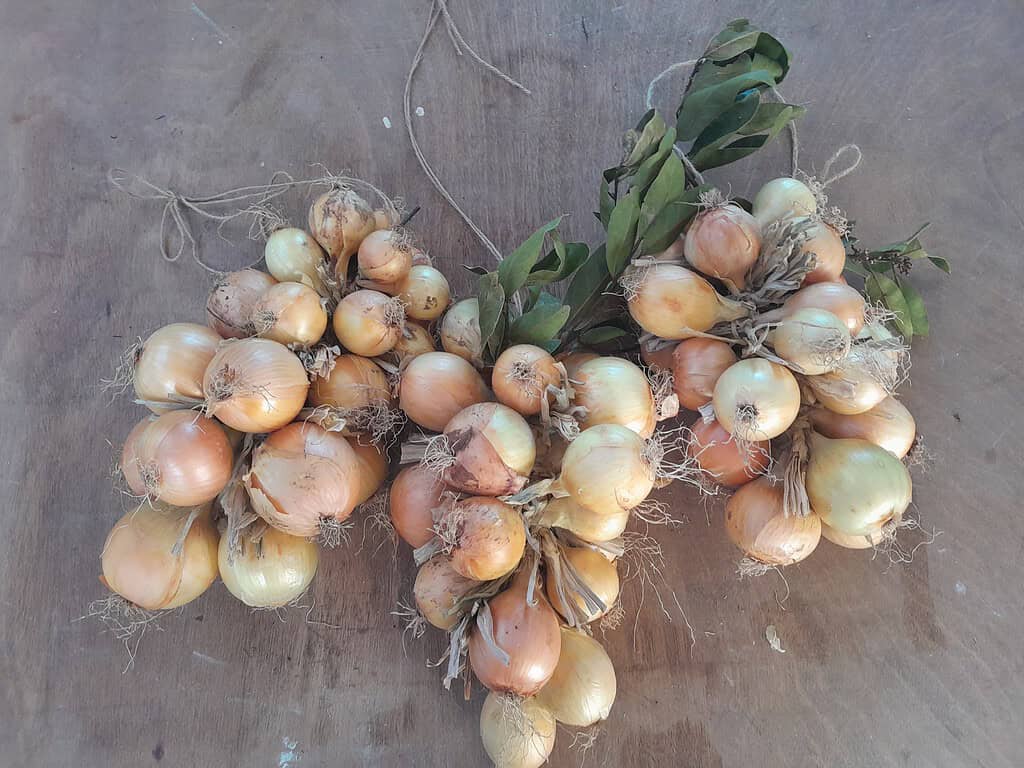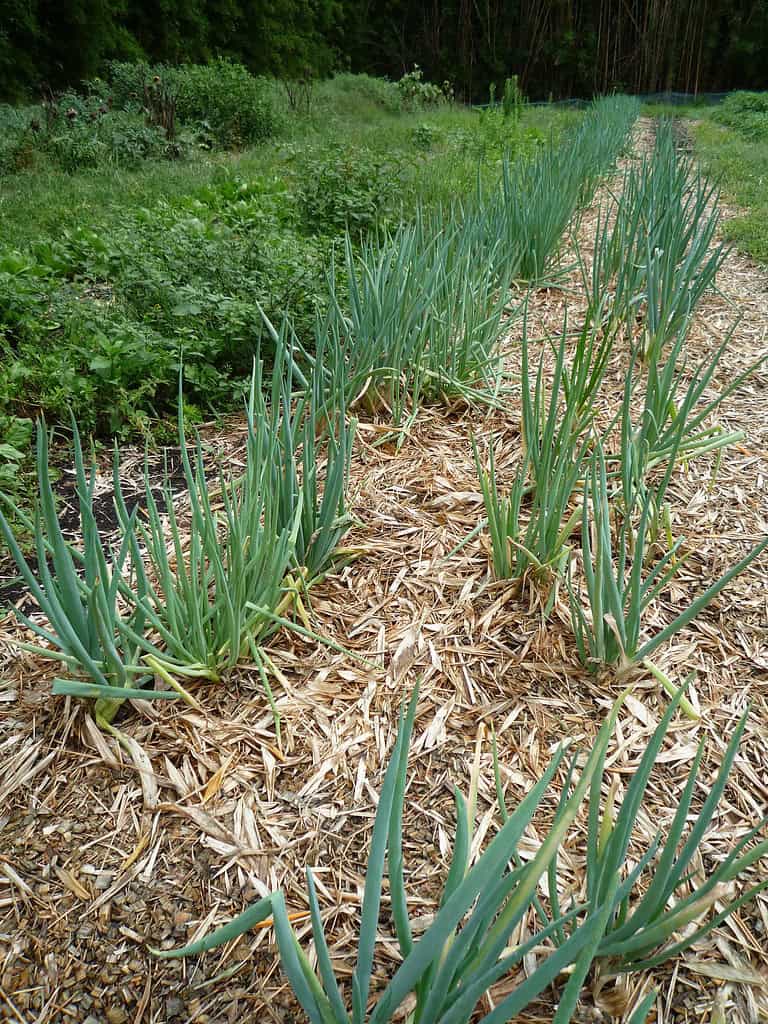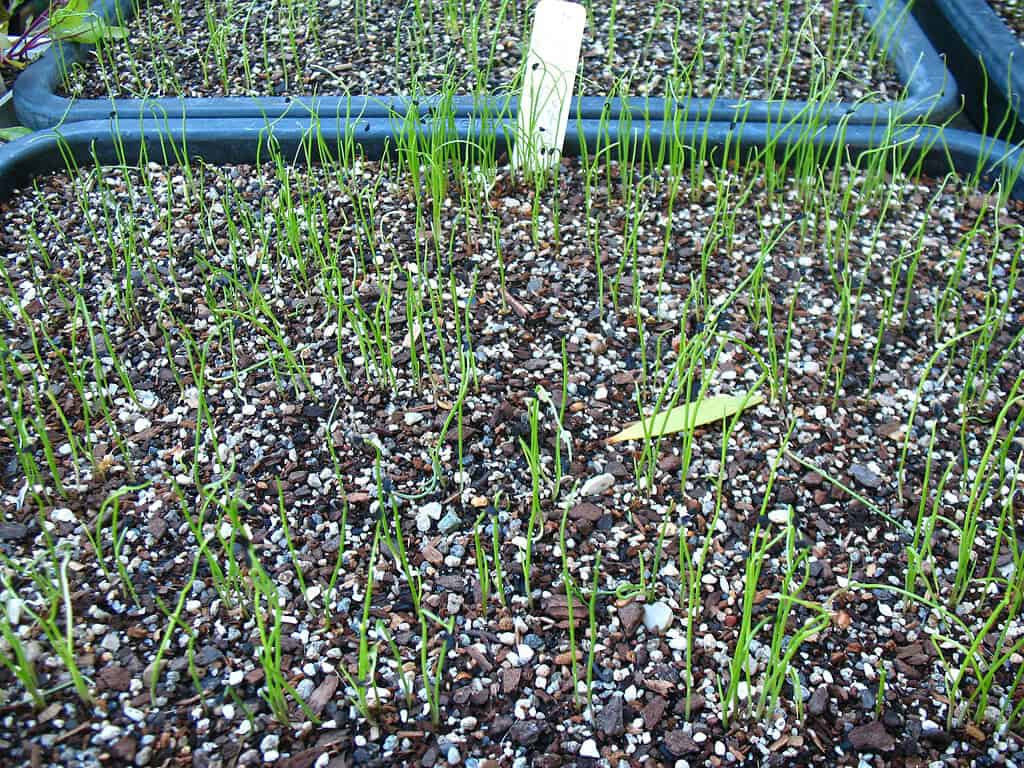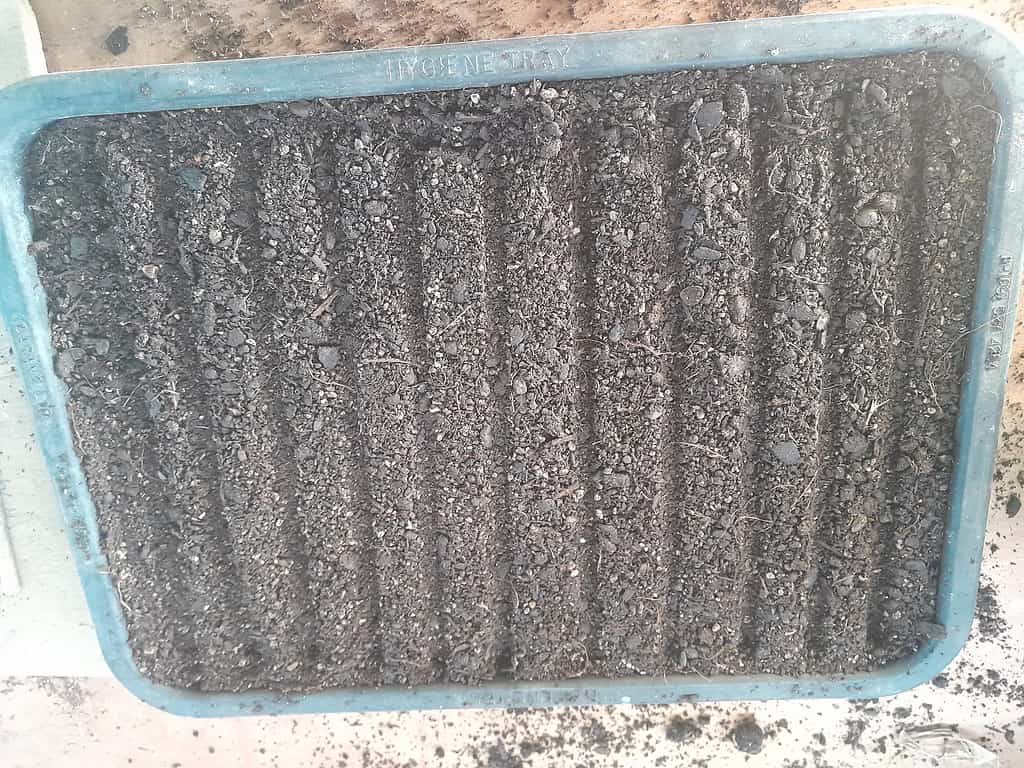It is winter, finally, even though it feels warmer now than it did a few weeks ago! The perfect time to get those onions going.
Hopefully you have your winter veg planted out for feasting on over the next few months. If not, you may still get away with a few quick growing small greens, such as pak choy, corn salad, mizuna, rocket, tatsoi, and endive which can all be direct sown straight into soil.
The next couple of months are the golden opportunity to sow onions and banana shallots. Banana shallots are like a long, large very sweet onion. Incredible roasted and used in chutneys etc, or used raw.
They are both slow growing, taking at least 6 weeks from sowing to get big enough to plant out, and then another 5 months in the ground before harvest. That’s why we need to think about sowing them now over June and July!
We were first inspired to grow our own onions after visiting Les and Bev Blackwell’s garden about 15 years ago. Les had a beautiful raised bed in which fitted exactly his year’s needs of 600 onions! And now, having grown our own onions the last several years, I can say it is such a worthwhile crop to grow. Most of us probably start cooking each meal by gently sautéing an onion or two. That’s 360 onions already! Then there’s chutneys, relishes, pickles and kassundi which use lots of onions too!
Features of Onions
• Onions don’t take a huge amount of space as they are closely planted, and if well mulched, need very little attention.
• They are a great storage crop – once harvested, (usually around mid January) they can be plaited and hung in a dry cool spot ready to use as needed. They usually store til around November when they start to sprout.
• Growing your own means you can eat organic onions! Why is that important? Non-organic onions are pretty cheap to buy, but they are regularly sprayed with various pest and fungicides). On the other hand, organic onions are free of all the nasties, but 3 to 4 times the price of non-organic (and for good reason!).
So, if you want to be able to partake freely of one the most health giving vegetables in the world, GROW YOUR OWN!

Soil Needs
Onions are fairly light feeders so a light dressing of compost will be enough. Foliar feed with seaweed spray made from kelp.
Water needs
Onions need damp soil to keep growing and avoid stress. The critical time for onions is when they start to bulb up around late November on. If denied water, the onions will be small, and the stress could attract thrips and black fly. The key is to mulch them well once they are big enough to grow above the mulch layer – 15-20 cm tall. A 10-15 cm layer of bamboo leaves/chopped banna grass make fantastic mulch for onions. The mulch will also make it super easy to keep on top of the weeds. If you have a good water supply, a good deep water every few days in dry periods will be worthwhile.

Preventing Weeds
As onions are so closely planted, they are difficult to weed. And because they are in the ground for so long, unless you mulch them well ie thickly, weeds will eventually smother them and ruin your crop. Don’t use grass clippings for mulch, they will break down too fast. A thick layer of bamboo leaves is awesome.

Pests
Thrips is a tiny, long insect which LOVES onions (and spring onions). Thrips scrape the leaves and leave long whitish marks on the leaves. The lesions on the leaves can lead to fungal diseases and reduce the size of your onions. Thrips multiply fast so checking and observing your onions each week is a good idea. We use predatory mites which are a very effective, natural biological control to keep the thrips from damaging the onions. (Available from BioForce)
Black onion fly is a small black aphid that sucks the juice out of the plant. It breed super fast being an aphid. It is attracted by the smell water stressed onions (or chives/spring onions etc) give off. If you keep your plants damp and mulched they won’t bother you.
Some Favourite Onion varieties
• Storage Onions: Pukekohe Longkeeper (Egmont seeds) yellow storage onion can be large if well watered – keeps very well. Italian long keeper (Kings Seeds) has also done well for us.
• Red onions: Red Rambo and California Early Red – red onions are tricky, they don’t always bulb up for me!
• WallaWalla Onions: extraordinary, huge, white crunchy mild sweet onions which are great for eating raw, fermenting or pickling. They do NOT store well.
• Purplette (Kings seeds) – small red/purple salad onion (fast growing by comparison)
• Banana Shallots: Zebrune (Kings Seeds) Banana shallot seed NZ grown (Trade me)
Sowing Onions and Banana Shallot seeds
Deep Seed Trays
The thing to bear in mind when sowing onions is that they are going to be in their seed tray for several weeks. So they need to have room for their roots to grow. If you don’t have deep seed trays (about 5cm internal depth), you can sow them into a shallower tray. When the roots start to hit the bottom, put another tray of potting mix underneath them so the roots can keep going. When you plant onions out, it is good practice anyway to trim to the tops and the roots, so you can run a knife along between the two trays at planting time.

Fresh Seed
It pays to have fresh seed. Onion seeds lose their viability (ability to germinate) within 1-3 years. And the expiry date on the seed packet doesn’t actually tell you when the seeds were harvested, as this is not a requirement in NZ. So be warned!!
Space for seedlings
Avoid overcrowding the onion seeds in your seed tray. Aim for around 1 cm between seeds so you get healthy plump seedlings.
A small bamboo twig makes a useful marker for straight rows of seedlings, pressed into the potting mix. Sow seeds into the groove then cover with seed raising mix and press down flat. Water lightly and keep damp til seedlings emerge – usually in around 10 days (depending on temperature). We keep ours in our greenhouse.

Good luck!
Words and excellent advice from our brilliant Food Resilience Coordinator, Caity Endt



















